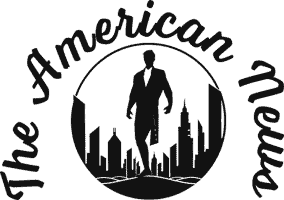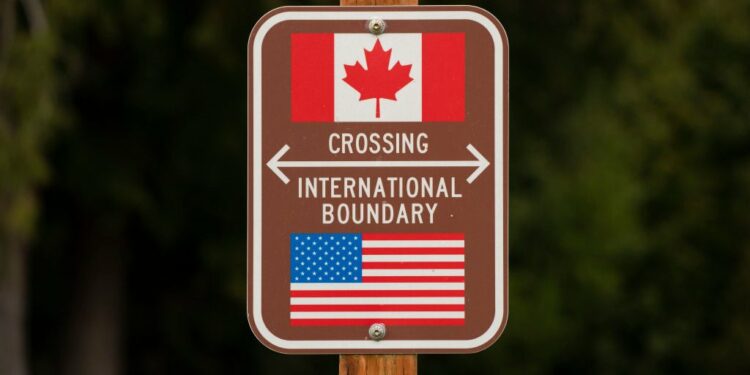On Jan. 2, 1988, U.S. President Ronald Reagan and Canadian Prime Minister Brian Mulroney signed a revolutionary free trade deal that removed tariffs on goods and services across the world’s longest border.
The treaty was not controversial in the U.S., but many Canadians feared it would eventually lead to a loss of political independence. During the election later that year, Mulroney had to fend off accusations that he sold Canada out.
“We built a country east and west and north,” said Liberal leader John Turner during the key TV debate. “We built it on an infrastructure that deliberately resisted the continental pressure of the United States. For 120 years we’ve done it. With one signature of a pen, you’ve reversed that, thrown us into the north-south influence of the United States and will reduce us … to a colony of the United States, because when the economic levers go, political independence is sure to follow.”
Mulroney handily won the election, and the free trade deal survived. But 36 years later, as President Donald Trump repeatedly threatens to make Canada the 51st state, it is starting to look like Turner had a point.
Trump’s threats have galvanized Canadians. Polls show they are overwhelmingly opposed to joining the U.S., and they are suddenly open to taking previously unpopular steps to strengthen their country’s independence. Yet Canada is in an incredibly difficult negotiating position because of just how reliant it has become on American markets.
When Mulroney and Reagan signed the deal, 75% of Canadian exports went south of the border. It is now 80%. That is not a huge increase, but trade has surged from around one-third of Canada’s economy in its first 100 years to two-thirds today. If Trump follows through on his threatened 25% tariffs, Canada would be plunged into recession.
And Trump can make those threats because Canada depends on trade far more. Even for Michigan, where auto parts go back and forth across the border to Ontario up to eight times during the manufacturing process, trade with Canada makes up only 11% of its economy. Overall, Canada-U.S. trade is about 3% of the U.S. economy to a third of Canada’s.
Canada has always grappled with the gravitational pull of the U.S. The first Prime Minister, Sir John A. Macdonald, built a rail line from the Atlantic to the Pacific to settle the plains and ward off the Americans. The country began to stop resisting the pull of gravity after the Second World War, negotiating the landmark Auto Pact trade deal in 1965. But President Richard Nixon’s 10% tariffs on all imports in 1972 pushed Prime Minister Pierre Trudeau—Justin’s father—to try once again to reduce Canada’s economic dependence on America. His government brought in a foreign investment review process and, eventually, the National Energy Program. But the move infuriated oil-rich Western Canada and regional opposition killed Trudeau’s program, removing a crucial lever that Ottawa could have used in today’s crisis.
Read More: How Canada Fell Out of Love With Trudeau
Every government since Trudeau Père has tried to diversify trade, with limited success. The gravitational pull of America is impossible to resist—or ignore.    Â
In 1969, Pierre Trudeau famously told the Washington Press Club that Canada is like a mouse sharing a bed with an elephant: “No matter how friendly and even-tempered is the beast, if I can call it that, one is affected by every twitch and grunt.”
The elephant is now decidedly less friendly, and is doing far more than twitching and grunting. Trump has agreed to pause the 25% tariffs for 30 days, but that is not enough time to allow Ottawa to reorient trade relationships that have been built for decades around assumptions that are now collapsing.
The problem for Canada is that it can’t quickly shift its exports to new markets. If the U.S. no longer wants Canadian aluminum or potash, there isn’t the rail and port capacity to send it elsewhere. It’s a similar case for the 4 million barrels of cut-rate crude that goes to the U.S. every day—entirely the source of the U.S. trade deficit with Canada—given the lack of east-west pipelines and other infrastructure.
Trump’s threats have sent an icy jolt of fear through the land, and Canadian opinions have suddenly shifted on pipelines and other questions. Premiers are swearing they are ready to dismantle internal trade barriers. Even former Conservative Prime Minister Stephen Harper—one of the most pro-American leaders in Canadian history—said Tuesday that Canadians must “accept any level of damage to preserve the independence of the country.”
The federal government has vowed retaliatory tariffs and provinces have ordered U.S. booze removed from liquor store shelves, meaning millions of Canadians would have to drown their sorrows with rye instead of bourbon. That is a powerful gesture, but last year Canadian tipplers spent $1.5 billion Canadian on American spirits—a mere 0.5% of U.S. liquor production.
Some hoped that the negotiations around the USMCA in 2019 would offer clues to a better approach. Canadian tariffs targeted industries who would have the ear of U.S. decision makers—betting that Kentucky distillers would find a way to get in touch with then-Senate majority leader Mitch McConnell, for instance. That was coupled with friendly chats with business partners and politicians in border states who know the value of the northward exports, which seemed to eventually help convince Trump to sign a deal that looked not too dissimilar to NAFTA, calling it the “best agreement we’ve ever made.” But on Wednesday, after Canadian premiers went to the White House to plead their case, a deputy chief of staff reiterated that annexation is the goal.
Resistance to Trump’s tariffs on Canada is likely to emerge south of the border, from laid off autoworkers and consumers paying more for gas, cars, and appliances—a political struggle in which Canadians will be onlookers. But Republican lawmakers are lining up behind Trump and he’s said any higher prices would be “worth it.”
Where does this leave Canada? The unpopular Trudeau is finally on his way to the exit. The once inevitable ascension of Conservative Leader Pierre Poilievre is now in doubt, since former central banker Mark Carney—a Liberal—looks like he might be better suited to managing Trump.
Voters are on track to decide between the two men in an election expected this spring. Both are now promising to stand up to Trump and make tough decisions to make Canada more resilient. Ironically, Trump may have done Canadians a favor by pushing them to do things they ought to have done long ago.
The mouse has had a nasty fright and is doing what it can to protect itself.
Source link : http://www.bing.com/news/apiclick.aspx?ref=FexRss&aid=&tid=67b09fe6f5e449df924a566f37097e9e&url=https%3A%2F%2Ftime.com%2F7225251%2Fcanada-dependent-us-economy-tariffs-trump%2F&c=8757335967010552878&mkt=en-us
Author :
Publish date : 2025-02-14 23:00:00
Copyright for syndicated content belongs to the linked Source.












